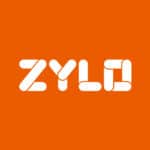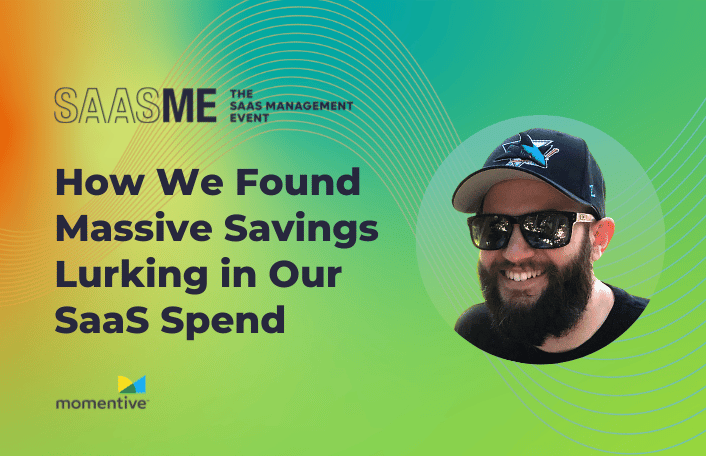11/29/2022
Table of Contents
Survey Monkey’s SaaS Management journey began in late 2019 as the company faced a trifecta of mounting challenges. For one, they had recently acquired two startups that lacked a centralized approach to procurement, meaning they increased the complexity of Survey Monkey’s already sprawling tech stack. Simultaneously, Survey Monkey’s engineering teams were busy upgrading the organization’s infrastructure to the cloud, while navigating how to leverage SaaS to transition the company to a hybrid work environment.
“It was affecting our production services and our engineering teams, but also our business systems, IT, security, and data teams,” said Jon Alves, Senior Technology Category Manager, in a recent session from our SaaSMe event. “We were looking for a solution to address all of these different challenges that were mounting. With all of this, we were seeing a growing need for additional help.”
As the procurement business partner for Survey Monkey stakeholders who purchase and manage SaaS, Alves made the business case to adopt a SaaS Management platform, ultimately partnering with Zylo.
Read on to learn key takeaways for how Alves and his team drove cost optimization and savings through rationalization, license management, vendor consolidation, and strategic contract negotiation. And for more stories like this, check out all of the on-demand sessions from our fall SaaSMe event.
Tackling SaaS Management Challenges Head-On
1. Establish a Foundation for SaaS Management
Alves said his team began by establishing a foundation to first understand their complete list of applications and suppliers, and then analyzed the data.
“It allowed us to really understand who our key suppliers are and really lean into them,” Alves said. “For example, it helps you understand that Salesforce is also the owner of Tableau or Slack or some of these other solutions. You can see that full picture. You’re not seeing those as individual lines on a procure-to-pay report.”
Next, Alves leveraged Survey Monkey’s real-time data to establish policy, process, and a category management strategy for moving forward, with the goal to eliminate waste and achieve significant savings.
“We were able to reduce our total number of applications from 430 at the end of 2020 to 396 today. That 34 may seem a little bit odd, but we also onboarded a lot of new technology,” Alves said. “There were some one-for-one swaps, other cases where we added a couple of different solutions and maybe only took out one. But after three years, we canceled 222 applications, which in aggregate is around $7 million in spend that we removed from our tech stack.”
2. Keep the House Clean: Consolidate, Optimize, Rationalize
Alves referred to the next phase as “keeping the house clean,” which involved prioritizing, consolidating, optimizing, and rationalizing Survey Monkey’s licenses.
Using Zylo’s categorization and filters, Alves discovered opportunities to consolidate redundant SaaS applications and functionality. Specifically, he said the “Top 10 Redundant Functions” filter made it seamless to consolidate duplicity. And since the filter updates in real-time, he continues to use it to spot redundancies in newly downloaded apps.
Next, Alves leveraged Survey Monkey’s license usage data to weed out unused tools, optimize investments, and prevent additional shelfware (unused software).
“Being able to use the usage data to optimize these solutions, we’re able to suggest when to not buy additional licenses, but also make program changes where you move from an opt-out where everybody in a group or the organization gets a license to moving to an opt-in where you need to make a request or meet certain requirements before you gain access,” Alves said. “These are cost-avoidance strategies to ultimately eliminate the need for adding additional licenses.”
Alves uses the accurate utilization and pricing data to find alternatives for new solutions employees request and requires stakeholders to present financial justification in order to add new tools or licenses.
3. Leverage Zylo Managed Services
In 2021, Alves’ team adopted Zylo Managed Services, which acts as a personal SaaS negotiator to manage all SaaS renewals from start to finish. As an extension of the Survey Monkey team, their Zylo negotiator worked with internal stakeholders to define scope, understand demand plans for reductions or rightsizing of a particular renewal, then used the data to negotiate directly with the supplier.
“They’re managing 39% of our spend, and they’ve been able to achieve 8% total contract savings and decrease the annual SaaS spend by 3%. That 8% averages out to over a million dollars in savings for us in the last 12 months,” Alves said. “Overall, the program has been able to uncover and realize some savings that we felt we were leaving on the table when we didn’t have these resources available.”
Survey Monkey’s Key Takeaways for Building their SaaS Management Framework and Achieving Savings
1. Leverage Zylo’s Saved Filters for Efficient Category Management
“Out of the box, Zylo has a ton of filters and different ways to visualize the subscriptions you have,” Alves said. “For me, it’s also about setting up filters by quarter, year, business unit, executive, or by requester. I save a lot of time now when I’m asked about certain subscriptions for certain executives or finance partners — I can just click into the view and give the data. It’s also helpful when I meet with our CIO and CTO and I’m able to run these saved filters to ensure that we’re properly planning for the next quarter, two quarters, or even a year in advance.”
2. Discover Low-Hanging Fruit
“Whether it’s for license management or your expensed applications where you’re seeing multiple users expensing the same solution, or maybe one user who’s expensing multiple solutions, it gives us a place to start and to guide conversations that otherwise don’t have much support,” Alves said. “We’re able to even provide screenshots of these opportunities, and of course once you get into them, you can dig a little deeper and go beyond what’s at that surface level.”
3. Connect Applications via Direct Integrations
“This is where some of the best cost-avoidance savings comes in, as these direct integrations are typically your largest and highest-dollar contracts,” Alves said. “You’re really able to make sure employees utilize the licenses appropriately, and it prevents adding licenses midterm when it’s unnecessary.”
4. Incorporate Data Insights into Process and Policy
“We’ve been able to successfully achieve cost avoidance and cost savings by building our SaaS Management program with the data that we get from Zylo,” Alves said. “Once we put those policies and processes in place, we can guide our stakeholders and end users through them so we have this uniform and standardized experience, and we’re getting similar results each time a new request comes through. When we go through renewals, we also avoid sprawl and proliferation of our tech stack by making sure the policy aligns to the experience we want to build.”
5. Evaluate Zylo’s Managed Service Offerings
“From the success that we’ve had with this program, not just from the time we’ve gotten back, but the actual dollars that have been saved, this program has essentially paid for itself,” Alves said. “It’s worth asking your AE or your SaaS consultant about it, and there’s no harm in finding out whether or not this is a fit for you. My experience has been extremely positive.”
If You Know Where to Look, You’ll Find Savings
To wrap up, Alves attributed Survey Monkey’s SaaS Management success to the visibility in the Zylo platform, the ongoing maintenance he practices, and the extra time saved from working with the Zylo SaaS negotiator.
“If you know where to look, you’re going to find the savings,” he said. “You just have to know what you’re looking for.”
For more: Check out Alves’ full presentation and other engaging sessions at SaaSMe On-Demand.
ABOUT THE AUTHOR

Zylo
Zylo is the leading enterprise SaaS management platform that transforms how companies manage and optimize the vast and accelerating number of cloud-based applications organizations rely on today. The platform provides one system of record for all cloud-based software purchased across a company, enabling customers to discover, manage, measure and optimize cloud investments with real-time insights into spend, utilization and feedback data.

